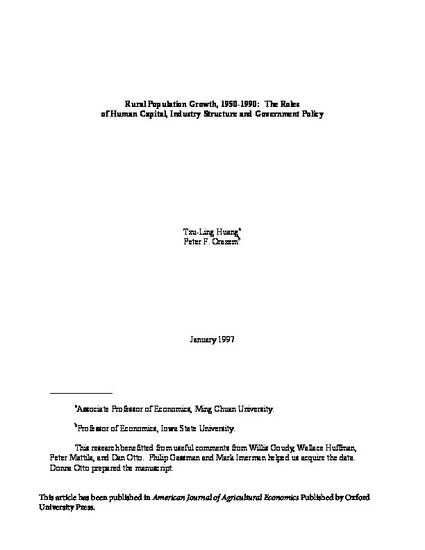
Article
Rural Population Growth, 1950–1990: The Roles of Human Capital, Industry Structure, and Government Policy
American Journal of Agricultural Economics
Document Type
Article
Disciplines
Publication Version
Submitted Manuscript
Publication Date
1-1-2002
DOI
10.1111/1467-8276.00323
Abstract
Human capital raises rural incomes, but this effect is swamped by higher returns to human capital in urban markets. This leads to “brain drain” from rural areas. Populations grow more rapidly in rural counties that have a diversified employment base. Farm population grows faster (or declines more slowly) in counties with relatively high farm income, and nonfarm populations grow faster in counties with relatively high nonfarm income. However, higher farm incomes lead to slower nonfarm population growth and vice versa. Rural county government services financed by local taxes or debt have neutral or negative effects on population growth.
Copyright Owner
American Agricultural Economics Association
Copyright Date
2002
Language
en
File Format
application/pdf
Citation Information
Tzu-Ling Huang, Peter F. Orazem and Darin Wohlgemuth. "Rural Population Growth, 1950–1990: The Roles of Human Capital, Industry Structure, and Government Policy" American Journal of Agricultural Economics Vol. 84 Iss. 3 (2002) p. 615 - 627 Available at: http://works.bepress.com/peter-orazem/93/

This is a manuscript of an article from American Journal of Agricultural Economics 84 (2002): 615, doi: 10.1111/1467-8276.00323. Posted with permission.